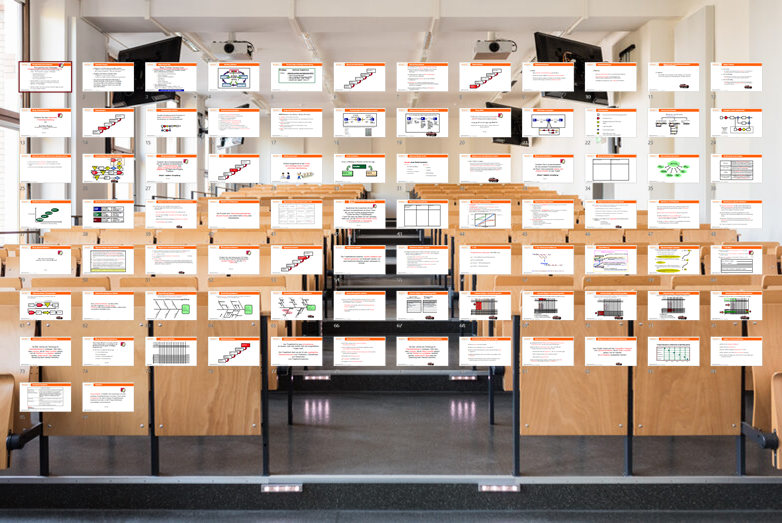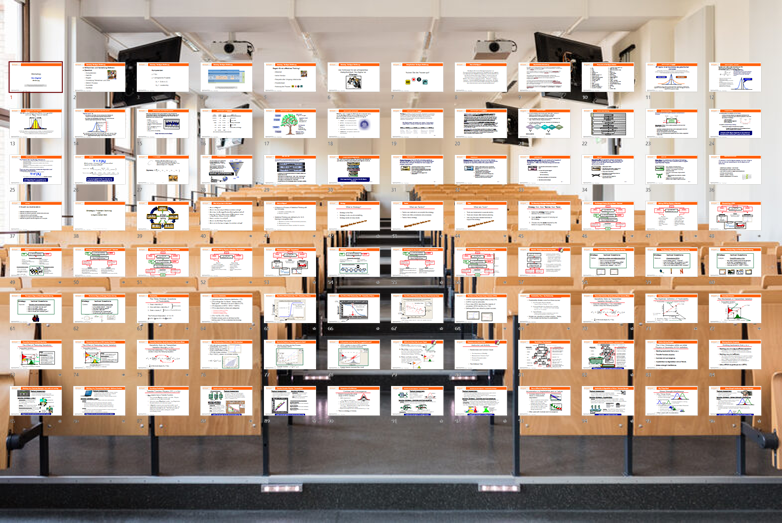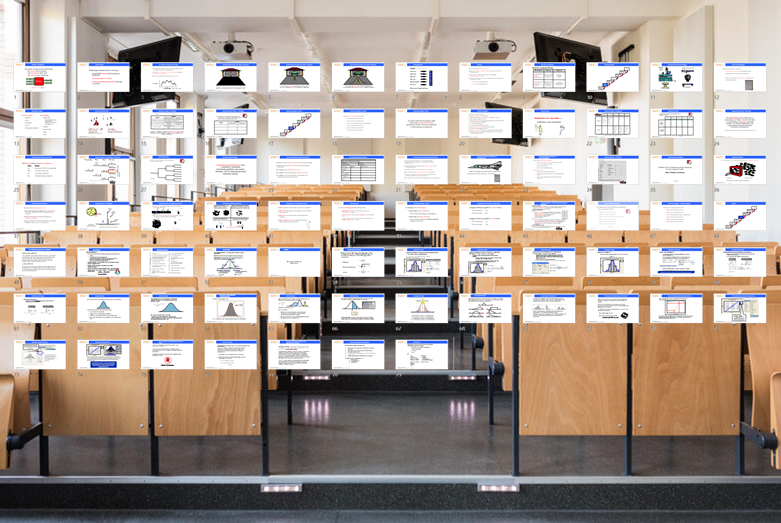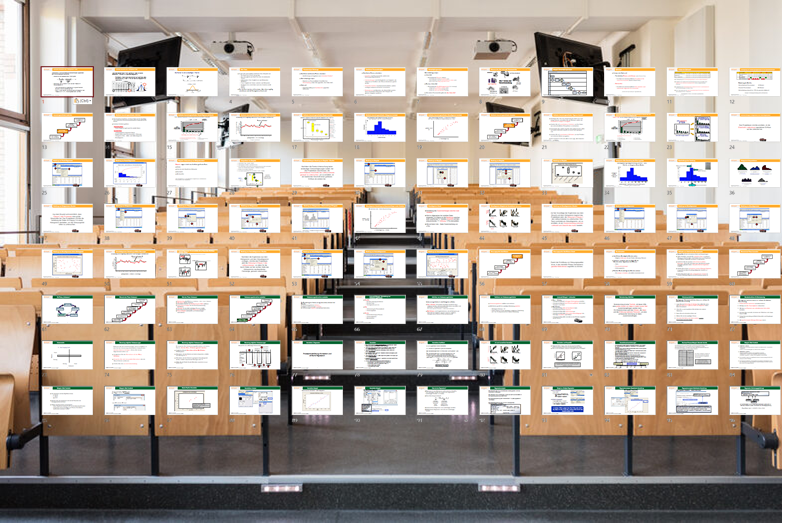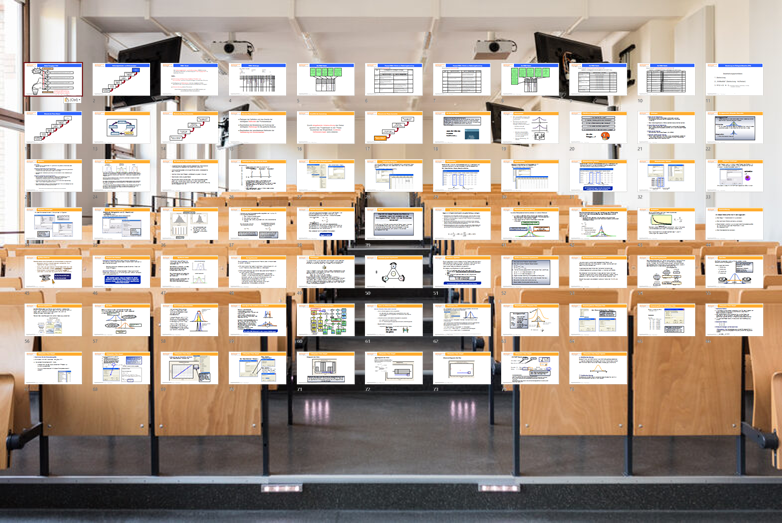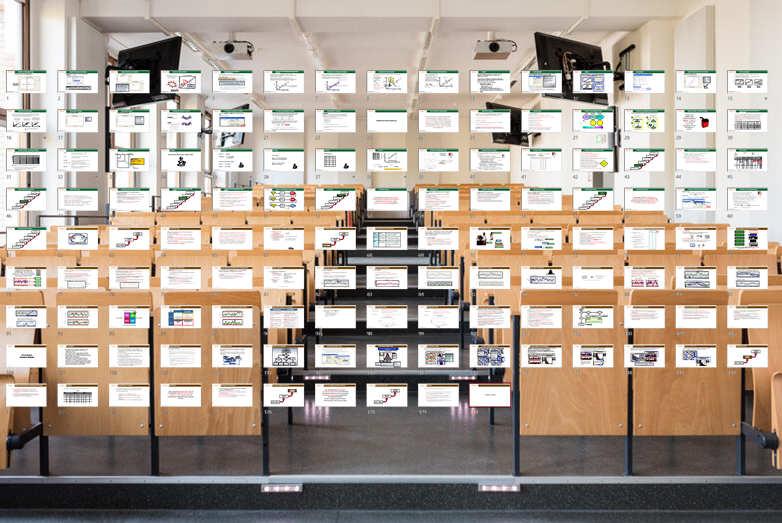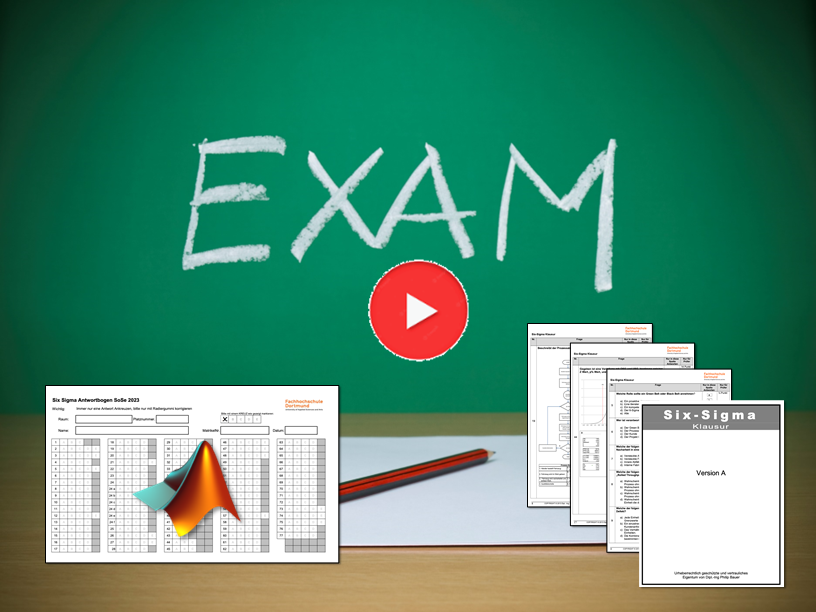Six Sigma lecture
7 days of lectures with discussion groups and practical exercises/activities and then the exam
Lecture day 1
08:15 What is Six Sigma and its story
08:52 The "Define" phase
09:21 Exercise: Problem description
09:25 Process scheduling plan
09:47 Exercise process flow plan
09:51 SIPOC model and schedule
10:13 Break
10:28 Exercise SIPOC
10:32 CTQ
12:00 Lunch
12:45 Exercise: Operative definitions
12:49 Project frame
13:00 y = ƒ (x)
13:15 y = ƒ (x) exercise
13:19 Process scheduling plan
13:22 cause-effect diagram:
14:14 Break
14:29 Project letter
15:10 Define results of the phase
15:30 End
08:52 The "Define" phase
09:21 Exercise: Problem description
09:25 Process scheduling plan
09:47 Exercise process flow plan
09:51 SIPOC model and schedule
10:13 Break
10:28 Exercise SIPOC
10:32 CTQ
12:00 Lunch
12:45 Exercise: Operative definitions
12:49 Project frame
13:00 y = ƒ (x)
13:15 y = ƒ (x) exercise
13:19 Process scheduling plan
13:22 cause-effect diagram:
14:14 Break
14:29 Project letter
15:10 Define results of the phase
15:30 End
Lecture day 2
08:15 The "Measure" phase
09:32 Data collection plan
09:54 Break
10:09 exercise data sources
10:13 grouping of data - layering
10:28 Data collection tools
10:58 Rew's sample
11:35 Exercise: Data collection plan
11:38 Sample removal
11:42 Statistics
12:08 Lunch
12:53 parameters of the location
13:08 parameter of the scatter
13:19 Normal distribution
14:11 Break
14:26 Exercise: Normality
14:29 Normal distribution
14:33 Introduction of graphic representations
15:30 End
09:32 Data collection plan
09:54 Break
10:09 exercise data sources
10:13 grouping of data - layering
10:28 Data collection tools
10:58 Rew's sample
11:35 Exercise: Data collection plan
11:38 Sample removal
11:42 Statistics
12:08 Lunch
12:53 parameters of the location
13:08 parameter of the scatter
13:19 Normal distribution
14:11 Break
14:26 Exercise: Normality
14:29 Normal distribution
14:33 Introduction of graphic representations
15:30 End
Lecture day 3
08:15 Measurment System Analysis
08:55 Exercise: Operative definition
08:59 measuring system analysis
09:21 Gage R&R
10:02 Break
10:17 Central border value,
10:28 Data collection sheet
10:46 MSA scattering components
11:05 Exercise: measuring system analysis
11:09 Measurement system analysis atributive
11:46 Lunch
12:31 measuring system analysis
12:38 Process capability
13:34 capacity examination: variable data
14:25 Break
14:40 Z value: another ability index
15:30 end
08:55 Exercise: Operative definition
08:59 measuring system analysis
09:21 Gage R&R
10:02 Break
10:17 Central border value,
10:28 Data collection sheet
10:46 MSA scattering components
11:05 Exercise: measuring system analysis
11:09 Measurement system analysis atributive
11:46 Lunch
12:31 measuring system analysis
12:38 Process capability
13:34 capacity examination: variable data
14:25 Break
14:40 Z value: another ability index
15:30 end
Lecture day 6
08:15 Correlation and simple regression
10:02 Pause
10:17 Residuen
11:01 Exercise: Modeling of Y = F (x)
11:05 Statistical test planning (doe)
12:12 Lunch
12:57 Exercise: helicopter attempt
13:00 Statistical test planning (doe)
13:08 Break
13:23 FMEA and documents
14:22 Exercise: Validation of improvements
14:26 The "Control" phase
15:10 exercise: error prevention
15:30 End
10:02 Pause
10:17 Residuen
11:01 Exercise: Modeling of Y = F (x)
11:05 Statistical test planning (doe)
12:12 Lunch
12:57 Exercise: helicopter attempt
13:00 Statistical test planning (doe)
13:08 Break
13:23 FMEA and documents
14:22 Exercise: Validation of improvements
14:26 The "Control" phase
15:10 exercise: error prevention
15:30 End
At this event, bachelor and master students from all areas of the university come together.
Speakers

Doz. Dipl.-Ing. Philip Bauer
Venue
Rather Bungert 31, 50859 Köln, Deutschland





